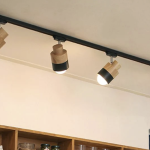

Pendant lights or kitchen are a great way to add a decorative touch to any room. These light fixtures are often grouped together in a series and come in a variety of styles, so you can find the right ones to match your decor. They can also provide a significant amount of illumination in any room and are often used to highlight the focal point of the space, such as the island or dining table.
Pendant Lights or Kitchen: The Basics
Regardless of their shape, the most basic pendant lights are those that take bulbs mounted base up, inside a globe or under an open shade or reflector. They can be made from a variety of materials and can offer both softer ambient lighting and focused task lighting.
The style of a pendant can determine its purpose: Some are designed for general lighting, while others are more suited to providing task illumination. For example, glass pendants are good for dining areas and kitchen islands because they offer a softer glow and can be easily cleaned from stains. Metal, enameled, or hand-hammered ones, on the other hand, are more likely to provide focused task lighting and are less likely to throw off ambient light.
A number of factors influence the size of a pendant, including the height of your ceiling, the length of your table or kitchen island, and the width of the fixture. It is important to measure these dimensions in feet before you decide which style of pendant you want.
You should also consider the material of your pendant’s shade. Fabric shades can become porous and are not as easy to clean as glass or metal ones. Stainless steel, for example, is much easier to keep clean and will resist scratches and scuffs in a busy kitchen.
Pendants are typically hung above a table, counter or bar-height countertop. To get the correct size of fixture, you must first measure the length and width of your table, counter or island and subtract 12 inches to ensure there is 6 inches of headroom on each side for moving around.
Once you have determined the proper size of your pendant, you will need to decide how far apart you would like to hang each pendant. The rule of thumb is that it should be about half the width of your table or island to evenly distribute the light over the area.
When hanging multiple pendants, you should space them evenly over the table or island, but you may need to adjust their spacing based on the diameter of your fixture. In addition, the spacing of your pendants should be based on the ceiling height of your room.
How To Choose the Perfect Pendant for Your Home
There are many different shapes and styles of pendants, ranging from traditional round and oval to cone, cylinder, urn, dome and lantern. They can be crafted in a variety of materials, including glass, metal, porcelain sockets and fabric.




